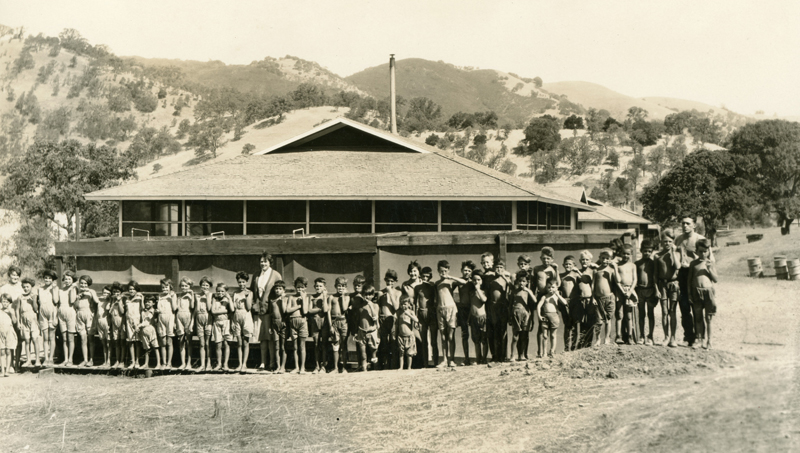Marsh Creek preventorium aimed to keep kids healthy

 CLAYTON, CA (Oct. 19, 2021) — The sign in front of Fire Station 16 naming it the “Sunshine” station puzzled me.
CLAYTON, CA (Oct. 19, 2021) — The sign in front of Fire Station 16 naming it the “Sunshine” station puzzled me.
Perhaps you’ve seen it when you drive east on Marsh Creek Road just past Morgan Territory Road.
I spoke to a lifelong Clayton resident, and she had been jokingly told by her mother and grandfather that there had been a nudist camp in that vicinity. Then the helpful folks at the Martinez Historical Society provided me with copies of news articles from the ’20s and ’30s that revealed details of a facility in that area known as the Sunshine Camp Preventorium.
In an effort to curb tuberculosis outbreaks, they established preventoriums throughout the United States in the early 1900s. They designed the rural retreats to transform “puny, undernourished youngsters, prey to every minor or major ill of childhood, into sturdy, active, healthy boys and girls.”
They targeted children ages 6-12 who possessed one or more of the following qualifications: an exposure to tuberculosis but no active form of the disease, a history of rheumatic heart disease, a diagnosis of malnourishment, a tendency to tire easily and frequent absences from school due to recurring respiratory issues.
Finding the funding
A school nurse named Rachel Miller had first-hand knowledge of the problems ravaging youngsters, so she ran a campaign to raise funds for treatment by selling Christmas Seals in 1920. The result of her efforts was meager, so in 1923 she enlisted the help of state Sen. Will R. Sharkey and his friend, Thomas B. Swift, a Martinez civic leader. This collaboration resulted in the formation of the Contra Costa Public Health Association, which took over the Christmas Seal campaign and successfully raised enough funds to finance a camp for a small group of children.
They erected the first camp of borrowed tents in the Mitchell Canyon Boy Scout Camp. It served only a few children over the school summer vacation. The next year’s camp still fell short of expectations, and leaders realized more funds were needed for its operation and for the purchase of a permanent location.
Relishing the great outdoors
In 1925, the Shell Oil Co. offered to lease its Marsh Creek property to Sunshine Camp for $1 per year. The location was “unexcelled for healthfulness as well as scenic surroundings.”
The former pumping station had cottages and buildings in place. And that same year, the Sunshine Camp Preventorium, as it was now called, greeted more children in need. It offered year-round care. Staff included a doctor, nurse, school teachers and, in later years, a social worker and psychologist.
Through the years of the retreat’s existence, Sharkey and Swift were its most ardent supporters. In 1930, the Board of Supervisors included $12,000 per year in the budget for its operation.
The mission was “to assist a child’s mental, moral and spiritual development” through fresh air, sunshine, healthy food, exercise, rest and education conducted in open air classrooms. A camp visitor noted children clothed in breechcloths worn during “all but the most severe of weather conditions.” Also, windows stayed open wide in sleeping quarters, though they had plenty of warm covers and screens to keep out flies and mosquitoes.
By 1936, Sunshine Camp Preventorium had served nearly 600 Contra Costa children. But the need for preventoriums waned after WWII, as antibiotic therapies and citizen education became more successful in limiting disease.
The site continues today as the Diablo Valley Ranch. The ranch provides an inpatient detox facility that carries on the tradition of restoring health and well-being.
For more information or to become a member, visit claytonhistory.org. Visit the Clayton Museum between 2-4 p.m. Wednesdays and Sundays at 6101 Main St.. No admission fee.

Debbie Eistetter
Debbie Eistetter has been a resident of Clayton for almost 30 years. She serves on the Board of the Clayton Historical Society and believes that history shows us the way to a more enlightened present and hopeful future. For more information about the CHS Museum please visit claytonhistory.org
